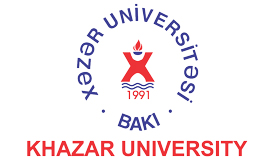International Conference on Materials Science and Research
November 16-18, 2017 Dubai, UAE
Enhance Broaden of Quantum dot Emission by Selective Area Intermixing
King Abdullah University of Science & Technology (KAUST), Saudi Arabi
Semiconductor quantum-dot (QD) lasers are well known of exhibiting superior performance due to the delta-like function of the discrete density-of-states, resulting in low-threshold current densities, and high gain. Arising from the size, composition and strain distribution in and around the QD, multi-state lasing are resulting, and leading to emission broadening. For monolithic integration of photonic integrated circuits, the selective area intermixing technique is preferred.
Controlling the Lasing spectra of QD lasers is highly desirable for certain application. The wide spectral bandwidth of the light source determines the coherence length which in turn determines the resolution of imaging optical coherence tomography (OCT) systems, Broad band light source are vital component for wavelength division multiplexing (WDM), and. Various methods have been proposed and utilized to achieve broad spectral bandwidth light emission from QD devices, such as using multilayer stacks of QDs with different emission wavelength for each layer, hybrid quantum well (QW)/quantum dot structures, optimizing the growth conditions to increase the inhomogeneous dot size distribution, or using multi-contact device structures. Quantum dots intermixing is a promising technique, to modify confining potential throw atoms inter diffusion, by increasing the effect of interface fluctuations between the QDs and their surrounding barrier layer materials shows as change in emission spectra.
In this work, we will present the systematic post-growth thermal annealing studies using various dielectric capping TiO2, SiO2, SrTiO3, HfO2, Si3N4, ZnO, and Al2O3, to control the degree of intermixing for tuning the energy spacing between ground and exited states during the spontaneous emission process, and with the view of achieving the broadest emission. We determined the best capping and annealing process to achieve the broadest emission from each capping, followed by selecting three specific capping layer to gain the highest broadening. Our experimental results show that annealing at 650°C for 120s are the best conditions to achieve the broadest spontaneous emission spectra. The QD laser structure capped with Al2O3, HfO2 and SiO2 gave emission wavelength and full-width at half-maximum (FWHM) of 1200nm / 182nm, 1210 nm / 153 nm, and 1110nm / 116nm, respectively. By combining these three selectively dielectric capping, a broad emission with 200 nm FWHM can be achieved. Otherwise even if only use Al2O3 as one capping a large emission of 182 nm can be achieved.

Biography:
Hala Al-Hashim, is a Ph.D Candidate in Material Science & Engineering since 2011, at King Abdullah University of Science & Technology (KAUST), within the Academic Division of Physical Science & Engineering. Her work is centered around developing and integrating innovative statistical approaches to advance research in Tuning Lasing Wavelength in III/V semiconductor quantum dot/quantum well devices which gives wide range of interested in applications such as biomedical imaging, optical communications. Halaʼs methodological research focuses on the field of solid state physics, photonic materials, nanofabrication, and advance engineered materials. She is a specialist in semiconductor material solid state lightening, has a very extensive knowledge in solid state physics, and analyzing & improving scientific projects. Mrs. Al-Hashim works as an effective instructor with 9 years of experience in developing labs. She was capable of generating enthusiasm in others and inspiring them to be innovative in their field. Hala received her Master Degree in physics from the Dammam University.



